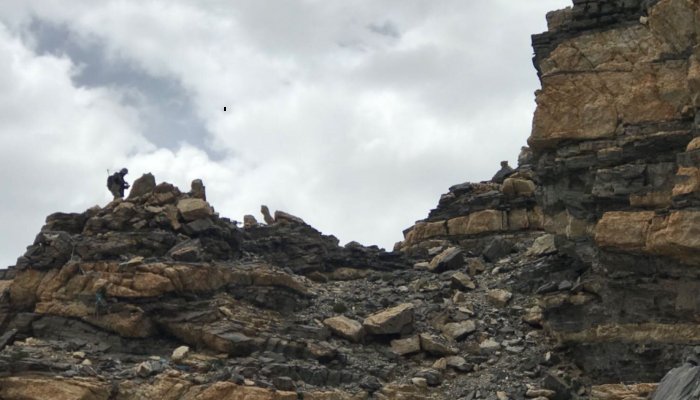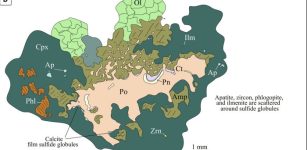Solar Radiation Can Affect The Earth’s Deep Interior
Eddie Gonzales Jr. – AncientPages.com – Scientists previously believed that Earth’s interior changes, such as volcanic eruptions and plate collisions, were the primary drivers of mass extinctions and climate shifts.
A geologist collects magma samples in a field campaign over the Tibetan Plateau. Credit: Hu Fangyang
A new study has revealed a surprise: new aspect: solar radiation can also affect the Earth’s deep interior.
Solar radiation varies with latitude, creating temperature gradients on the sea surface that affect the distribution of marine life. These carbon-rich organisms are transported into the Earth’s interior by the subduction of oceanic plates. Researchers from the Institute of Geology and Geophysics of the Chinese Academy of Sciences have discovered that this process significantly affects the redox state of arc magma.
The “redox” state of arc magma refers to the balance between reducing (losing oxygen or gaining electrons) and oxidizing (gaining oxygen or losing electrons) conditions within magma formed in volcanic arcs. Marine organisms serve as organic carbon and act as a major reducer for the solid Earth. Consequently, the redox state of arc magma can reflect how the sun’s influence penetrates deep into the Earth.
Analysis of numerous magma samples has revealed global redox state variations, crucial for targeting metal ores like copper, tin, and lithium—key elements for renewable energy technologies. These findings offer insights into the interactions between surface climate and deep Earth processes.
The study found magma in lower latitudes is less oxidized than in higher latitudes. Ocean floor studies showed more reduced carbon deposits in lower latitudes, which interacts with sulfur to form sulfide. This sulfide is transported into the mantle, contributing to the observed redox pattern.
“Earlier research comparing samples from similar latitudes found no significant differences. However, our samples from various latitudes showed different redox responses, revealing an unexpected pattern,” said geologist and study co-author Wan Bo.
“This unexpected pattern suggests that the Earth’s surface environment and climate, influenced by solar radiation, have a profound effect on mantle processes,” said Wan Bo, co-author of the study and a researcher at IGG.
So how does the sun work on the interior of the Earth?
Seafloor studies revealed increased reduced carbon deposits at lower latitudes. This carbon forms sulfide with sulfur, which enters the mantle, contributing to the observed redox pattern.
Hu Fangyang, corresponding author of the study said that “the observed pattern suggests a strong link between the surface environment and the redox state of the deep Earth, providing new directions for exploring the resources and environmental impacts of subduction systems at different latitudes.”
Written by Eddie Gonzales Jr. – AncientPages.com – MessageToEagle.com Staff Writer











